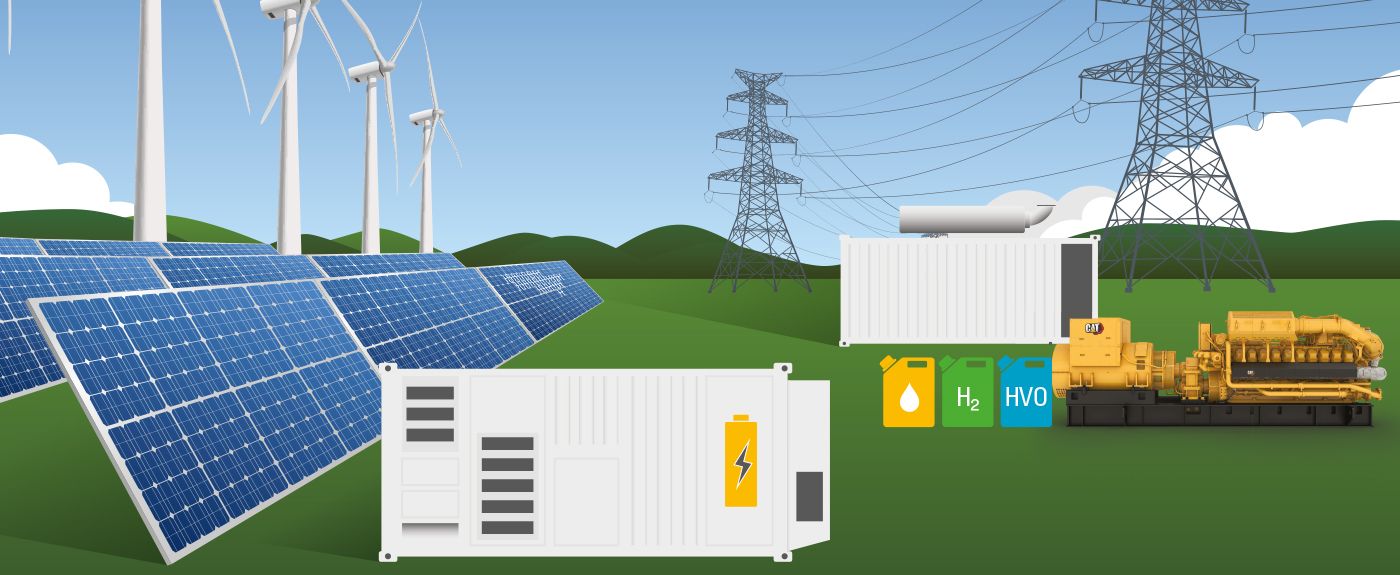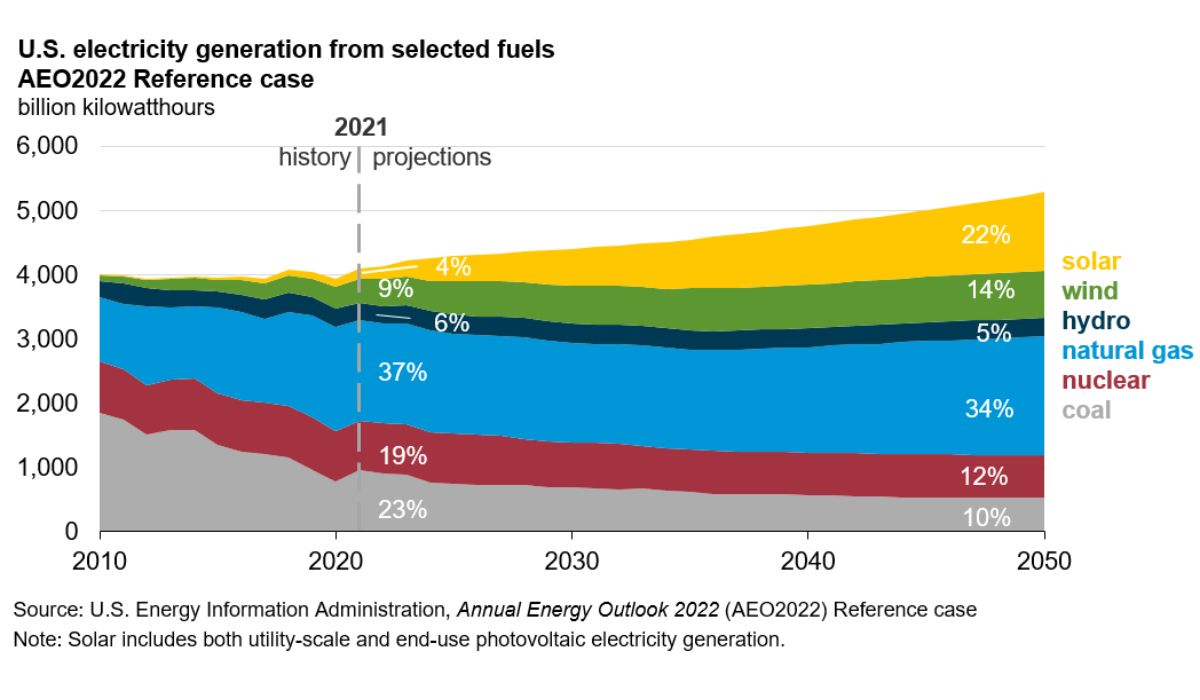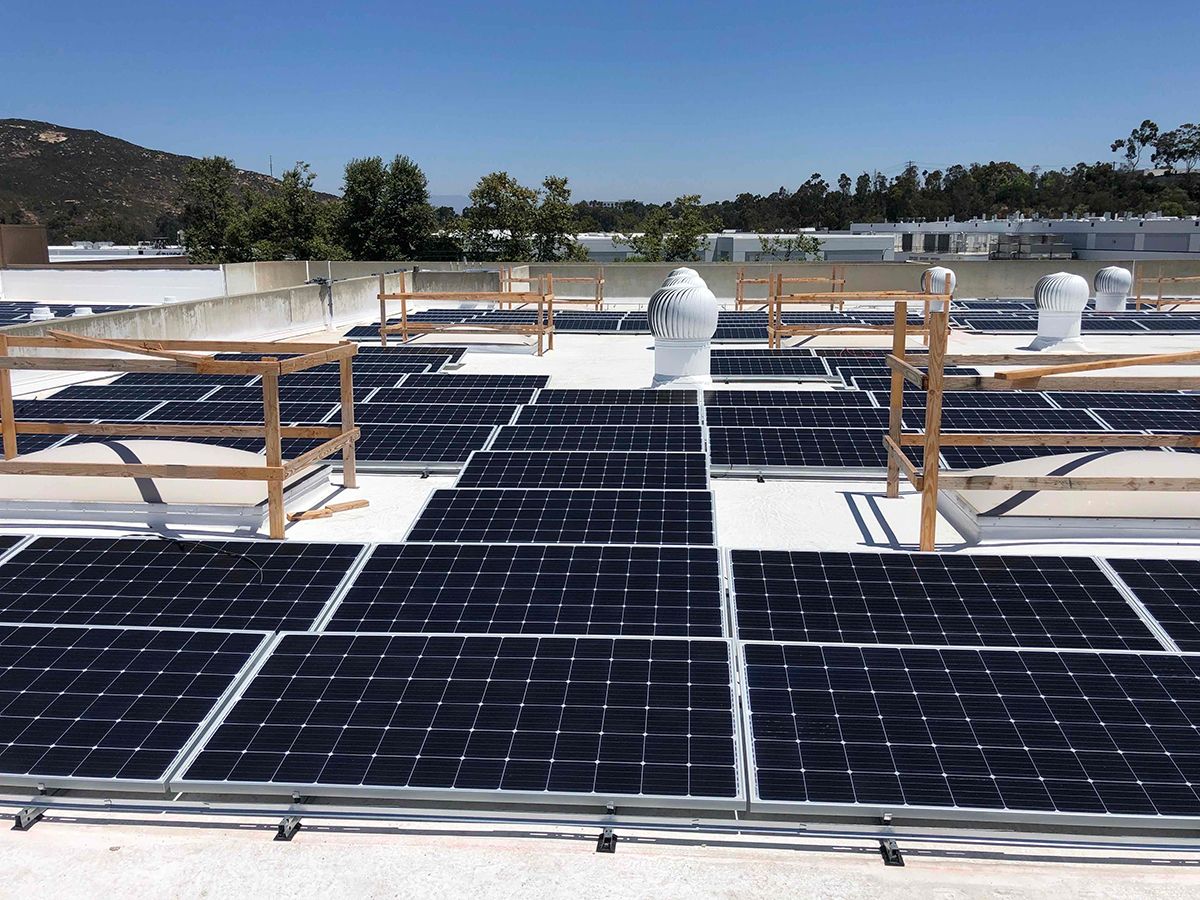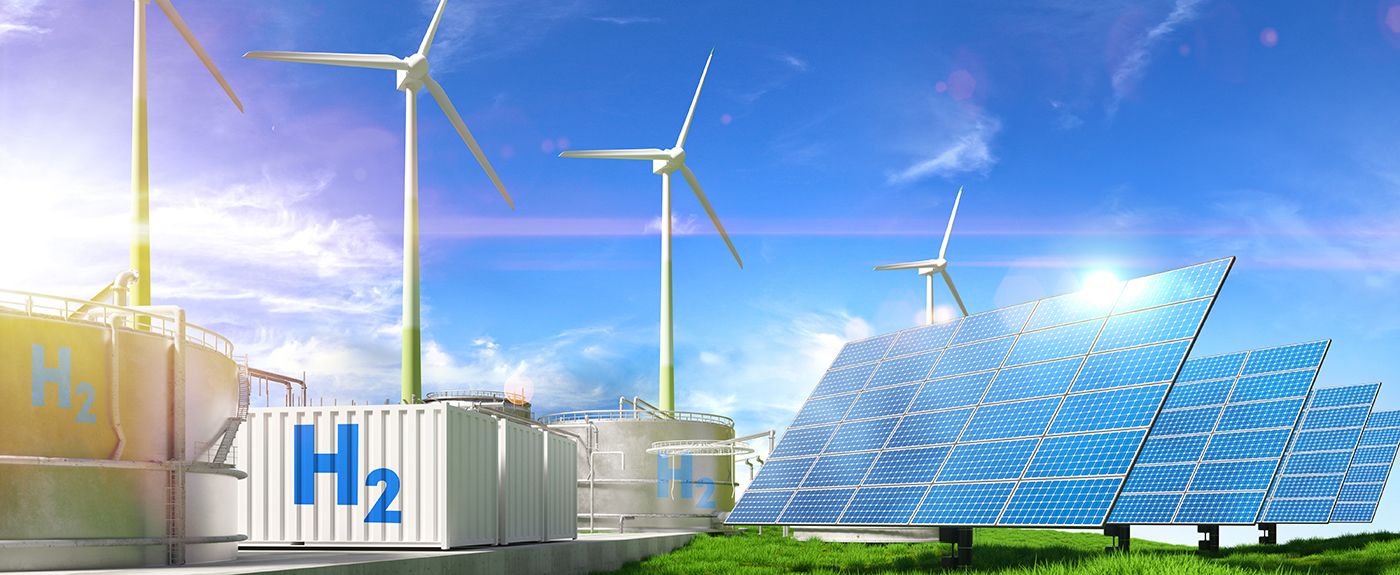

Sign In
Welcome! Sign In to personalize your Cat.com experience
If you already have an existing account with another Cat App, you can use the same account to sign in here
Register Now
One Account. All of Cat.
Your Caterpillar account is the single account you use to log in to select services and applications we offer. Shop for parts and machines online, manage your fleet, go mobile, and more.
Account Information
Site Settings
Security
Distributed Energy Benefits and Grid Systems Integration
On-demand energy solutions ensure resiliency, sustainability, and lower energy costs
By Thomas Smith, Director, Energy Development in Caterpillar’s Electric Power Division with collaboration from Dr. Joe Nyangon, Senior Industry Consultant for Power and Utilities Innovation, SAS | Posted: January, 2023
When I first started working in the power industry 40 years ago, we didn’t have portable computers or cell phones, and the only electric vehicle I ever thought I would see was a golf cart. Thanks to advancements in technology and an increased focus on sustainability, the energy landscape is changing dramatically, and the continued electrification of almost everything is the future!
According to the U.S. Department of Energy Solar Futures Study, we could see a 50% increase in electric power generation by 2050. In addition to increased demand, utilities are facing a powerful confluence of architectural, technological, and socio-economic difficulties. These challenges include the need to integrate utility-distributed renewable energy systems, severe weather events, aging infrastructure, growing cybersecurity demands due to investments in digital transformation, and the global effort to reduce greenhouse gas emissions.
Increasingly, utilities are turning to distributed generation to address these challenges. While conventional power stations are centralized and often require electric energy to be transmitted over long distances, distributed generation employs decentralized, modular, and more flexible technologies―often including renewable energy―located near the loads they serve. These systems often encompass multiple generation and storage components, referred to as hybrid microgrids.
According to the American Petroleum Institute, the use of renewable energy with natural gas as a bridging fuel is an effective way to a lower-carbon power sector, and in turn lower energy-related emissions. Plenty of renewable energy sources, including solar and wind, emit no greenhouse gases, however, they are not currently positioned to fully meet capacity or reliability needs of most utilities. Natural gas offers the U.S. power sector a lower-carbon alternative to coal or diesel with the potential to deliver reductions in carbon dioxide emissions.

The appeal of combining distributed renewable energy and natural gas goes beyond potential greenhouse gas emission reductions; this approach also increases energy security and reliability, contributing to economic growth and energy independence. Renewable energy sources alone are intermittent and non-dispatchable. A significant switch to large-scale centralized renewable energy sources also requires investment in transmission, distribution, and other supporting generation and storage technologies.
Distributed generation helps electric utilities deal with the challenges of supply/demand imbalance, reliability, power quality, and infrastructure cost. Among many benefits, small power-generating sources located near points of use help offset investments in centralized power plants, transmission lines, and substations.
In recent years, generator sets fueled by natural gas have proven highly suitable for distributed generation. They are extremely reliable, economical to install and operate, and relatively easy to site and permit. In addition, advances in control technology allow for fast ramping of these units, positioning them to accept loads in a matter of seconds and respond to load swings more rapidly.
Small-scale generation assets are becoming even more valuable as distributed energy resource management systems (DERMS) are being deployed to use them cost-effectively. Additionally, as lower-carbon intensity fuels such as renewable natural gas (RNG), biogas, and hydrogen become more cost effective and readily available, distributed generation equipment can be modified to accommodate these fuels.
Our electric power system faces many challenges, and as the energy landscape evolves to address increased electrification, we will have even greater demand than ever before. Caterpillar is positioned to serve as a trusted partner with the technologies and expertise to provide alternatives to established energy sources and products that utilize fuels that are reliable and cost effective.
For more information on Caterpillar’s innovative power solutions, visit https://www.cat.com/sustainablepower.

Thomas W. Smith
Contributor
Thomas W. Smith is the Director of Energy Development for Caterpillar Power Solutions. He leads a development and field-based sales team of experts responsible for growing and supporting Caterpillar’s Energy as a Service business. His sales and development team also supports the sales and service of Caterpillar’s power generation products, including distributed power, economic dispatch/resiliency, and combined heat and power (CHP). His team works with dealers, customers, and partners to develop and provide the best overall solution for power generation equipment and related products/services.
Tom is active in power generation industry associations including the US Combined Heat and Power Alliance (President), Cogeneration World Coalition (Board Member), Northeast Clean Heat and Power Initiative (Board Member), and Midwest Cogeneration Association (Board Member).

Joe Nyangon
Contributor
Joe Nyangon, Ph.D., is a Senior Industry Consultant for Power and Utilities Innovation at SAS. He leads the design and development of advanced analytics solutions that drive revenue growth for customers and advises utilities on how to leverage these solutions to address emerging challenges of grid modernization, electrification, decarbonization, and digitization. With over 15 years of academic and industry experience, he has conducted research on distributed energy resources, energy economics and macro-energy system modeling, techno-economic analysis of energy systems, infrastructure investment, risk pricing strategies, and assessment of the effectiveness of renewable energy policies using econometric models. He has evaluated resource adequacy and capacity market design models that blend renewable energy and natural gas resources in the seven U.S. independent system operator and regional transmission organization (ISO/RTO) markets.
Dr. Nyangon holds a Ph.D. and two master's degrees focusing on energy systems engineering, computing systems, and energy economics and policy from Columbia University, University of Delaware, the University of Greenwich, and earned an undergraduate degree in engineering. He is an active member of the International Association for Energy Economics (IAEE), Institute for Operations Research and the Management Sciences (INFORMS), United States Association for Energy Economics (USAEE), Project Management Institute (PMI), and a senior member of the Institute of Electrical and Electronics Engineers (IEEE).
Related Stories
-
How Municipal Utilities Can Address Surging Power Demand
For many municipal utility managers I talk to, it’s getting tougher to continue providing the highest levels of reliability, service, and value. Customer preferences are changing. Some want 100% renewable power overnight; others simply care about cost. Other challenges are mounting, too: New technologies. Increased regulation. Workforce shortages. Budget constraints. And perhaps biggest of all, rising demand.
Learn More -
Act Now to Leverage CHP Tax Credits Up to 50%
The Inflation Reduction Act (IRA), signed into law in August 2022, provides nearly $400 billion in tax credits and incentives over a decade to promote climate change mitigation and stimulate clean energy development in the U.S. It’s the largest single investment in climate and energy in American history — and it includes the highest incentives ever provided by the federal government for combined heat and power (CHP) projects.
Learn More -
5 Steps to Sign-Off on a New Energy Solution
You’re a large energy consumer, maybe in healthcare, education, distribution or transportation. You’re facing pressure — internal, external or both — to increase your energy resiliency, lower your carbon emissions, reduce your energy costs, add capacity for expansion, or some combination of all four. You know you need to act (and soon), but you’re struggling with how to get started implementing a solution.
Learn More -
Is Your Organization a Good Fit for EaaS? And Is Your EaaS Partner a Good Fit for You?
Our EaaS team at Caterpillar has implemented solutions for all types of operations: from K-12 schools and grocery stores to industrial facilities. The concept — you purchase energy outcomes and turn ownership and upkeep of energy assets over to a third party — works for many organizations. How do you know if yours is one of them?
Learn More -
Demystifying the EaaS Model: Don’t Buy Power Products. Buy Energy Outcomes.
Software as a Service, or SaaS. Today, most applications — everything from Microsoft Office to Google Drive to Salesforce — are hosted by a third-party provider and made available via the web or a mobile app. You don’t need to install or configure anything on your computer, and the SaaS provider handles all maintenance, upgrades, and licensing. It’s more convenient for users and more affordable for businesses.
Learn More -
Hydrogen’s True Colors: A Key to Defining Carbon Intensity
Often referred to as a “clean-burning” fuel, hydrogen is the most abundant chemical substance in the universe because its combustion generates near-zero greenhouse gas emissions at the tailpipe. . It’s also colorless, odorless and burns with a near-invisible flame. So why does nearly every Google search or news story about hydrogen turn up terms like “green,” “blue” and even “pink”?
Learn More -
Trends in the Energy Transition
When it comes to the ongoing efforts to decarbonize and reduce greenhouse gas (GHG) emissions, renewables are making up more and more of our sources of power generation, and we think this will continue—for many positive reasons. We have a lot of customers who are setting targets for Environmental, Social, and Governance (ESG) goals, aiming for improved carbon reduction.
Learn More












